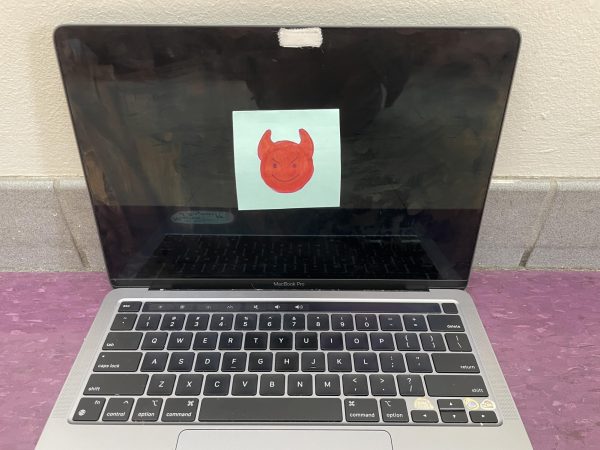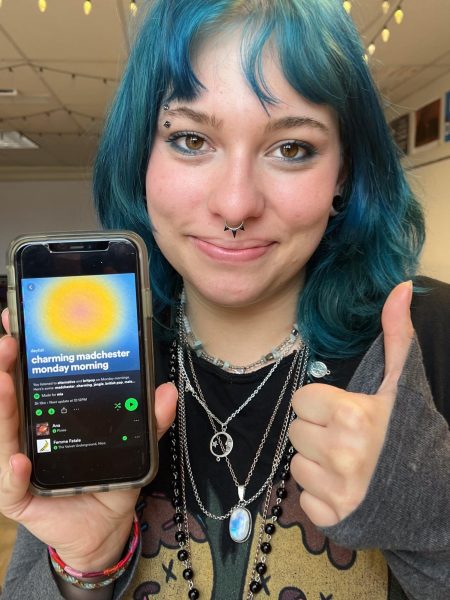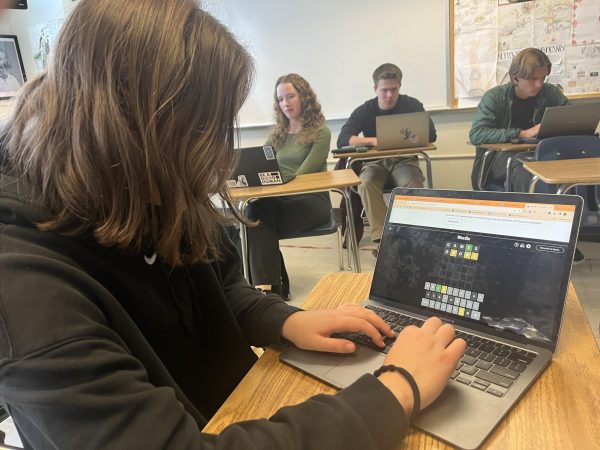Race Relations at Boulder High: A Black and White Issue
There’s no denying that Boulder has a tainted history when it comes to minorities. From being the headquarters of a KKK newspaper in the ’20s to redlining and gentrification in the ’60s to bias from the police regarding traffic stops and citations today, Boulder has undeniable racist incidents where it has treated people of color extremely poorly. Because of this, I was curious to hear current perspectives from some individuals of color about their experience living in Boulder, especially as a student attending Boulder High. Thus, I sat down with members of the black community to hear their experience of living in Boulder and attending the predominantly white school that is Boulder High. For the purpose of this story, as well as to protect the identities of the students interviewed, the sources are anonymous.
One of the main issues that students described is their different experiences in classrooms, especially in advanced and AP classes. As one student said, “I feel more of a need to prove myself intellectually to my teachers, especially as somebody on the AP track.” Another student expressed similar sentiments, saying, “You have to prove yourself intellectually every time you get a new teacher or change classes.” Students conveyed feeling that they were often dismissed academically on the basis of their race. One student said that “I felt that [the teacher] underestimated me because I was black,” and felt that the student would often be associated with the racial stereotype of being black and being a jock. Students expressed automatically being held to different standards in the classroom. They would encounter challenges before they even stepped foot in the classroom, and they’re forced to endure even more problems within their learning environment.
Students’ and teachers’ lack of education on how to have respectful interactions with minorities have unfortunate consequences for black students in the classroom. As one student pointed out, a classroom with all white students taught by a white teacher who grew up in a white community is unlikely to know and have the tools to treat students of color the same as any other students while simultaneously successfully navigate racially charged conversations in class. This failure often leaves black individuals in positions of significant discomfort in their classes, especially in history or English classes, where race is often discussed. Students expressed having a complete sense of dread towards going to the class, knowing that they would be subjected to uncomfortable conversations, limited or one-sided discussions, and even stares whenever classes would read books with racial themes or had units on slavery in history. One student described having kids just “sit and stare at me” during those particular units, while another said some students would gape at her as if “I was the slave.” And if the conversations weren’t taxing enough already, African-American students are often placed in the role of the “representative for their race.” One student described the pressure to be a “spokesman person for the entire race,” especially during conversations about books with racial themes, such as Invisible Man, Homecoming, or Malcolm X. Black students found themselves as the “go-to” person to look to represent “the other side” of the argument when classes had any racial discussions, leaving them in painful positions they never asked to be in. Students often found themselves unmotivated to go to class, especially when they knew what they were about to undergo.
While uncomfortable experiences in the classroom may be attributed to the lack of proper education of teachers and students regarding minorities, it may also be due to the lack of diversity in advanced and AP classes. While one couldn’t expect the predominantly white town of Boulder to have abundantly diverse classes, Boulder High still has a minority population of 31%, according to data from U.S. News. And yet the amount of minorities in the AP track is still disproportionate to the population at school. One must also look at factors that explain this that are not necessarily specific to race: socio-economic privilege. Nevertheless, members of the black student body often find themselves as the only black student or the only person of color in the room. National Honors Society, an organization made up of around 100 students, has only three persons of color. Anyone can do the math. People of color are not properly represented in honors classes. In order to understand both sides of the story, I sat down with Boulder High’s Principal Dr. Hill to understand why this might be the case and what was being done to address the issue. He explained that it is the consequence of a system that allows for some groups to get ahead while others get left behind. The issue starts as far back as elementary school, when simple differences in kids’ after school routines, such as having a parent ready to help with homework, can quickly add up and have lasting impacts on the student’s academic career. According to Dr. Hill, it’s an issue that all of the schools in BVSD are trying to address. Still, the reality for many black students at Boulder High is that they can expect to be the only person of color in the classroom.
The issues that black students face at Boulder High aren’t limited to the classroom, either. One student describes the social challenge of knowing when to speak up and when to not. It’s difficult, she says, “when people say things that are racist, and I don’t want to be that kid that’s always saying, “no, you can’t say that” because you just want to fit in…even though that does hurt and affect you differently.” She’s had to have uncomfortable conversations with kids about not saying the n-word, had people come up to her and start touching her hair without asking, or had people tell her not to get traditionally black hairstyles because they “liked her better the other way.” It’s comments and conversations like these that, while obviously racist, may seem manageable to the average white person. She mentions, however, that “yeah, that may not seem like a big deal, but when you do experience it every day, it’s just this very tiring thing.” Black students find themselves having to constantly work against the system of Boulder, where many kids weren’t really taught how to appropriately act with minorities. And while the issue is due partially to the lack of diversity of Boulder, which can’t easily be fixed, it’s also due to a lack of education on proper race relations.
There’s a misconception that, because Boulder is primarily a left-leaning city that prides itself on accepting everyone, we automatically treat minorities with the respect that they deserve. However, it’s evident from the challenges that African-American students face every day in Boulder that there is still a lot that needs to be addressed. One student says she wished people realized that in Boulder, “it’s racism that’s hidden under a blanket of liberalism. Boulder, as a whole place, is where it’s like “we’re so liberal, we’re so this, we’re so that, we vote in a certain way.” And yet we don’t act on those principles…citizens often struggle to fully educate themselves on how to interact with minorities and people of color. Just because you vote a certain way and put a certain sign in your front yard does not mean that you’re actually an activist.” Staking a Bernie 2020 sign in the yard or stamping a Warren sticker on the back of the car doesn’t excuse one from racist interactions with minorities. Too often, some people excuse their behavior just because their political identity falls in with a particular side. Often, it may seem like the best thing one can do to work against racial issues like these is to throw support behind a left-leaning candidate. My interviews with African-American students suggested differently. One of the best things I could do as an individual was to educate myself on how to respectfully and properly interact with people of color. The biggest takeaway I had? Education is key.






